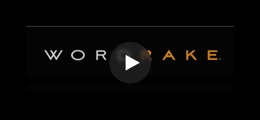Effective business communication relies on clear, concise, specific, and meaningful writing. Clichés fail all four requirements. In your first draft, a cliché may feel so easy and familiar to write that it seems irreplaceable. But, upon revision, you’ll see that clichés are unoriginal, broad generalizations—and often redundant. Delete them. Replace them. Your readers will reward you with their attention.
A major advantage of eliminating clichés from your business writing is the clarity and precision it brings. Without the clutter of overused phrases, your writing will be more persuasive and impactful, and you’ll be seen as more authentic, authoritative, and trustworthy.
Identifying and Understanding Clichés
Nearly every writing book admonishes you to avoid clichés, but how can you tell whether a familiar phrase is hackneyed or necessary? Is the phrase really a cliché, or is it an idiomatic turn of phrase, a term of art, or an effective representation of a complex idea that is efficiently conveyed through this phrase?
- Clichés are predictable and familiar phrases, often metaphors or tautologies, that have lost impact or novelty through overuse. Examples: “At the end of the day,” “think outside the box,” “a dime a dozen,” “it is what it is.”
- Idioms are culturally-rooted phrases that mean something different than their literal translation. Examples: “Kick the bucket” (meaning “to die”), “break a leg” (meaning “good luck”). Over-used idioms can also be clichés, so be careful.
- Jargon refers to specialized language or terms—usually unofficial—used by a particular group or profession to efficiently communicate shared ideas. Examples: “synergize” or “circle back” in business.
- Terms of art are words or phrases that have a specialized, precise meaning within a specific field, especially in law. Examples: “Consideration, “negligence,” “reasonable person,” and “non obstante veredicto” in law.
Understanding the difference between these terms will help you apply the right editing advice.
The Problem with Clichés
You’re sure to include clichés in your first drafts, and many business writers will leave them in their final drafts. But just because clichés have become staples in corporate writing does not mean they must be staples in your writing. Clichés invite your readers to question your authority and reliability. If you can’t come up with your own words, perhaps you don’t really understand what you’re talking about.
Business writing should be clear, concise, specific, and meaningful, and clichés don’t fulfill any of these requirements. Clichés are not:
- Clear - Many clichés are idiomatic, and not immediately clear. Even things like “at the end of the day,” which likely feels transparent to you as a writer, can be confusing to the reader. While you may mean “at the conclusion of what’s happening,” a reader may be confused as to exactly when you’re referring to. Others, if unfamiliar, can be difficult to decipher, even for native speakers. “Half the pie” may mean “half of a collected sum of money” to you, but your reader may be left wondering why anyone would want 50% of a pastry.
- Concise - A cliché is almost never the shortest way to say something. Many times, there are easier ways to express ideas. Take our previous example of “at the end of the day.” Chances are you could eliminate this statement entirely and still be perfectly clear. “At the end of the day, our profits will be higher if our messaging remains consistent” loses nothing if you write it as “Our profits will be higher if our message remains consistent.” These filler clichés add bulk without contributing useful information.
- Specific - If a phrase has been used enough to become a cliché, it is not specific to what you are writing. “When all is said and done” gives no details about the steps that must be completed, nor the timeline. “Once we get approval from the bigwigs” tells you nothing about whose approval must be sought, just that they are important in context. Both these cases need more information to be useful. Give your reader material they can act on.
- Meaningful - The phrase “that’s so cliché,” complete with eyeroll, tells you the problem with overused wording: it loses its weight and meaning. The phrase “packs a punch” doesn’t really. Saying “everything happens for a reason” gives no reason. If you’re resorting to a cliché to express your thoughts, you likely don’t have enough meaning behind your words. When you catch yourself filling space this way, consider conciseness: if it doesn’t add meaning or value, leave it out.
While many clichés started as inventive metaphors or fresh and insightful phrases, their repeated use killed their value. Now, stripped of their original context and uniqueness, the phrases have become clichéd expressions lacking the specificity and novelty that once made them impactful. These lazy, ready-made phrases may come to mind as you write, but you should reject their convenience and instead either skip them completely or search for something original and specific that perfectly captures your meaning and resonates with your audience.
Strategies for Identifying and Eliminating Clichés
Readers won’t struggle through a vague and cliché- or jargon-filled document, searching for explanations the writer left out. Instead, they will grab the nearest plausible (potentially wrong) interpretation or disengage entirely. To avoid this fate, you must examine your word choices and edit ruthlessly.
Here are strategies to help you in the editing process:
- Be Conscious of Clichés: Being conscious of clichés is the first step. Be wary of phrases that come too easily to mind; they might be clichés. Familiarize yourself with common business clichés so you can spot them as you write. Try reading your work aloud; this step can make clichés more apparent. If a sentence or phrase sounds trite, redundant, or overused when spoken, cut it or rewrite it.
- Question Relevance: Challenge the relevance of clichés in your writing. Ask yourself if they contribute meaningfully to the message. Resist the urge to use fancy phrases that add no clarity or insight. Clichés are often redundant. Every time you spot one, ask yourself if it’s essential to the message. If it’s not, you’re better off without it.
- Substitute with Substance: When you identify a cliché, ask yourself: What am I trying to convey here? Aim for specificity. Instead of saying “at the end of the day,” perhaps you mean “ultimately” or “after considering all factors.” Boost your writing by using specific details or examples rather than general statements. Replace clichés with honest, original expressions true to your personal experience and understanding.
- Seek a Fresh Perspective: Get a fresh pair of eyes to review your work because others can often spot clichés you might have missed. Use tools like WordRake for in-depth editing suggestions tailored to sophisticated writers. WordRake identifies clichés and redundant language in your writing, then suggests better ways to express your ideas.
How You Can Easily Edit out Clichés
Despite taking the steps above, you may miss ways to improve your writing. Luckily, WordRake can clean up even advanced writing and help you produce more convincing language. Here are just a few of examples of clichés and weak idiomatic expressions that WordRake cuts or edits:
I’m keeping a lot of balls in the air managing a lot of projects, so we may need to move that deadline.
I didn’t raise the issue because I didn’t want to make waves cause conflict.
Let’s drill down on explore that topic in the next meeting.
In this day and age, Now, computer literacy is a necessity.
Adaptability is part and parcel of inherent in a successful entrepreneur's toolkit, letting them navigate the ever-changing business landscape.
Salt was hard to come by was scarce for our ancestors.
Negotiations are at a standstill have stalled.
Chances are, the The people in the green shirts were probably the culprits.
There have been financial challenges, but rest assured that the company will come through this unscathed.
I want to take a minute to tell everyone about our new product.
The country, with its prowess as a manufacturer, has long cast a jaundiced eye on has long questioned the world of high finance.
The primary source of contamination, as a whole, was the migration of contaminants from the Northern Unit.
With the passing of time Over time, users’ aesthetic values and preferences change, and product appeal decreases.
It’s no secret that the The hospital has its problems.
It is not surprising then that the The professor’s faulty methodology leads to faulty opinions.
Conclusion
Business communication demands finesse, clarity, and purpose. Editing out redundant clichés is important to improve the effectiveness of your messages. Clichés dilute authenticity, erode trust, and hinder clarity in your writing. By cutting clichés and redundancies, you achieve authenticity, authority, and precision in business communication and strengthen your professional reputation. Convey your message sincerely, establish trust, and strengthen your argument. Replace clichés with original and meaningful content, and use editing tools like WordRake to ensure consistently impactful communication.
About the Authors
Ivy B. Grey is the Chief Strategy & Growth Officer for WordRake. Prior to joining the team, she practiced bankruptcy law for ten years. In 2020, Ivy was recognized as an Influential Woman in Legal Tech by ILTA. She has also been recognized as a Fastcase 50 Honoree and included in the Women of Legal Tech list by the ABA Legal Technology Resource Center. Follow Ivy on Twitter @IvyBGrey or connect with her on LinkedIn.
Kate Callahan is a Marketing Specialist for WordRake. Before her passion for learning and writing led her to join the team in 2023, she worked in non-traditional education, content creation, and translation. She started her career by teaching ESL to elementary school students in Japan. You can follow her on Twitter @KateC_Writing or connect on LinkedIn.








